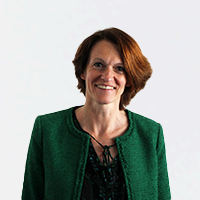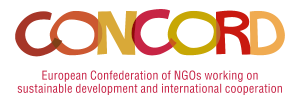
Tanya Cox
Director at CONCORD
It’s that time of year again: CONCORD is busy preparing its annual AidWatch report. It is a key monitoring and accountability tool, looking into how much Official Development Assistance, or ODA, the EU (really) gives to partner countries, how effective it is and whether the EU and its Member States are serious about trying to leave no one behind, the hallowed principle of the 2030 Agenda for Sustainable Development.
What struck me most this time around was linked to the OECD DAC, or Development Assistance Committee. This Committee is made of up rich countries, about two-thirds of which come from the EU. Together, they set the rules on what counts – or not – as ODA. And last year, DAC countries agreed that they could count in-excess COVID-19 vaccine donations as ODA!
How… HOW… can they stoop so low?? First, these countries hoarded massive quantities of vaccine doses – far more than they needed. In the EU’s case, countries hoarded 3.5 times more than the total population. And NOW they think they can claim ‘sharing’ in-excess doses as ODA! No doubt, without taking account of how many of those doses were actually usable/used on arrival in-country. Hoarding vaccines led to a global shortage in supply so that whole continents like Africa – with about a quarter of the world’s population, compared to the EU’s 7% – were left vaccineless, putting human lives at great risk. Despite Africa having used its experience of previous pandemics, many, many people will have died owing to EU countries’ behaviour. No doubt someone will calculate this number, but I haven’t come across it yet.
If you have seen such an estimate, I’d love to hear from you.
Unfortunately, this move is just the latest in a series of cynical attempts to make rich countries’ ODA figures look better than they are. To make them look more generous than they are (the so-called “donor effort”). It’s part of what’s called the “ODA modernisation process” which, when it started out a decade ago, was both necessary and well-intentioned. However, it has enabled a number of changes to be pushed through which undermine the concept of ODA. Often, EU Member States were behind the changes.
The first ‘innovation’ of note – spearheaded by France and Germany – was to revise the methodology for how (concessional) loans were counted as ODA, which led to the complex notion of the grant equivalent methodology (you can read more about this in our 2022 AidWatch report, out in October). The next change – pushed by France and the UK – meant that certain military operations could be counted as ODA, under specific circumstances. Then in 2017, under the pressure of considerable migration waves to Europe, the DAC decided to again revise the rules, which opened the door to many more in-donor refugee-related costs being allowed to be counted ODA.
This begs the question about key development assistance concepts such as aid effectiveness. How can aid be considered effective if it doesn’t even reach partner countries? Or if partner countries aren’t able to own – determine and lead – their development paths? Where is the mutual accountability?
According to our calculations, 1 in 6 euros of ODA is now what CONCORD calls inflated aid (ie. not given directly supporting partner countries and not meeting the Busan principles). In 2021, ODA would have decreased, were it not for the inclusion of the value of in-excess vaccine sharing. Only one country, The Netherlands, demonstrated the moral responsibility not to include this cost. On the other hand, Hungary went so far as to charge an even higher price than the DAC recommended per dose of vaccine.
What’s worrying is where this might go next? Now, for example, there are discussions about allowing Special Drawing Rights (SDR) reallocations to be counted as ODA. But there is zero “donor effort” involved in SDRs… In the future, could this aid inflation extend to efforts supporting climate change action? Rich countries absolutely should pay for the damage and harm they have caused around the world, but that should not be counted as ODA.
One thing is clear: OECD DAC ‘technical discussions’ often have significant political consequences. They should therefore be opened up to civil society representatives, so that we are able provide feedback on donors’ proposals … and to call donors out for self-interested ‘innovations’.
